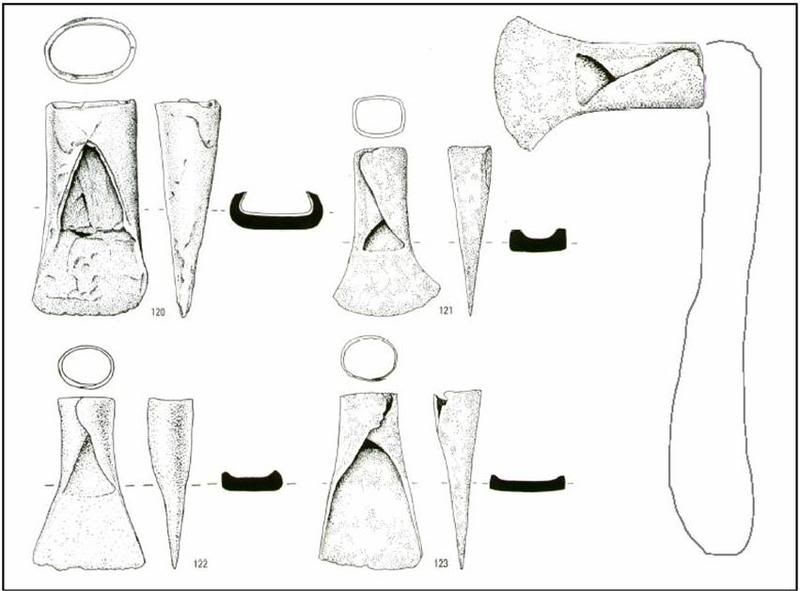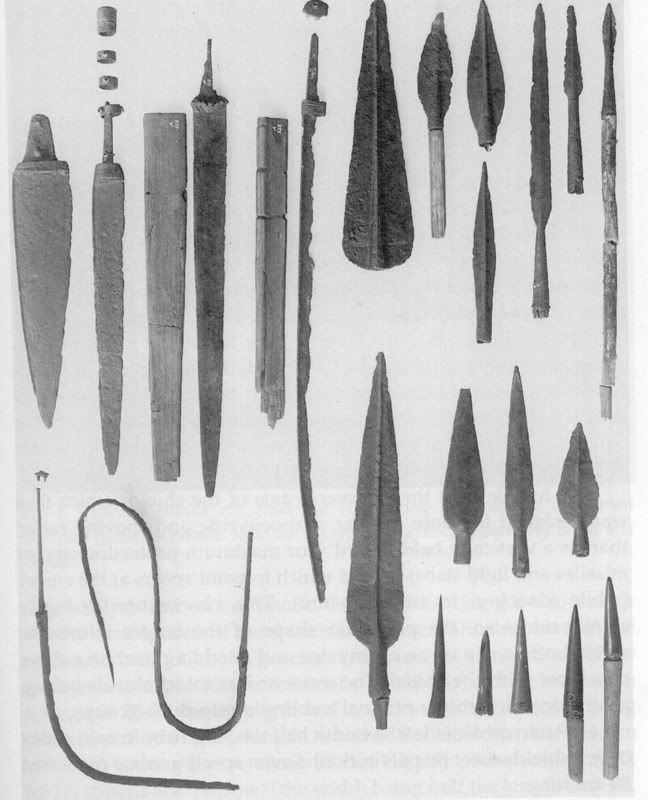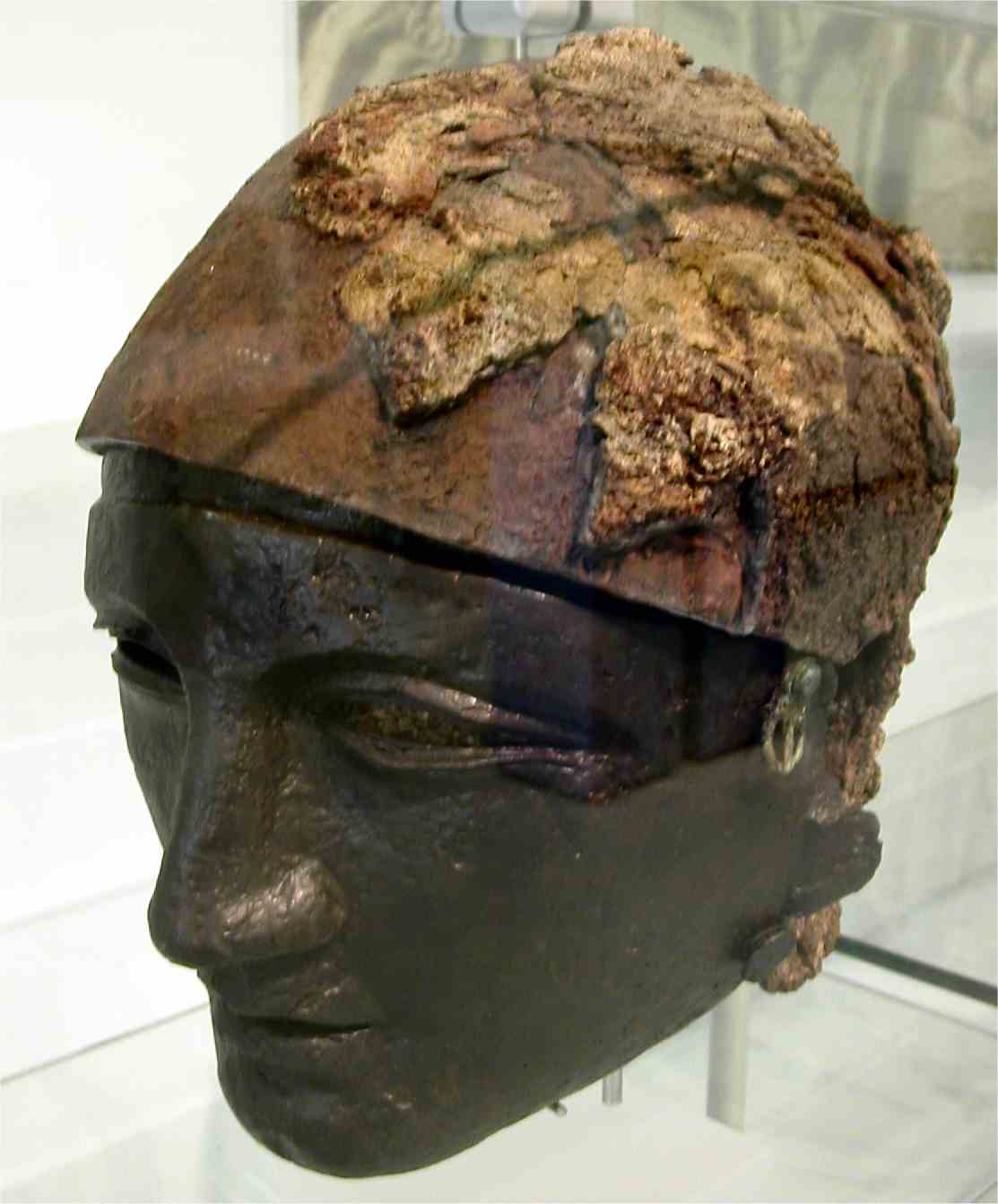CELTOGERMANS
(Bastijanthai, Lougoi)
With the term Celtogermans we can define two distinct realities in Eastern Europe, highly interconnected to each other: the Lugii (Lougoi) and the Bastarnae (Bastijanthai).
The Lugii (possibly meaning "The Bright Ones", from Celtic root) were a powerful confederation of different tribes, located in the area of modern Poland.
Despite the efforts of Polish archaeologists to assign a Proto-Slavic identity to the Lugii during the '30s, by analyzing the archaeological evidence in detail, identifiable in the Przeworsk Culture, the common theory today is that they were a composite reality, dominated by a strong Celtic element but incorporating sacral elements of Germanic martial culture (the Harii brotherhood) and various tribal entities speaking a Germanic language belonging to the West Germanic branch, such as the Elveconi and Buri (cfr.. Carl Waldman e Catherine Mason, Encyclopedia of European People, p. 498).
During the transition between the first century BC and the first century AD, the Germanic influence within the Lugian confederation grew exponentially, due to the overlap of new Germanic elements, this time coming from the eastern branch , until it became an entirely Germanic milieu, eventually giving life to the Vandals .
Przeworsk Culture IV-III B.C. "Celtic" Lugians, Archeological Museum of Krakow, Poland,
Lugian axe (identical to Lepontic axes) from Ciecierzyn
Przeworsk Culture II A.D. "Germanic" Vandals, Archeological Museum of Krakow, Poland,
Late Przeworsk Culture findings
On the other hand, first infiltrations of East Germans on the Culture of Przeworsk are attested already between the fourth and third century BC, giving birth to the Poienesti - Lukashevka Culture, identified as the material expression of the Bastarnae.
The Bastarnae are actually listed as originating from Silesia, then part of the Culture of Przeworsk , but in the third century BC they migrated, extending over a large area identified with the southern part of Ukraine and Moldova.
Strabo places the Bastarnae "Among the Ister (Danubius) and Borysthenes (Dnepr)"
(Strabo, Geography, VII , 3, 17)
The Bastarnae are actually the first Germanic people we have records of: they are mentioned along with the Sciri in the Protogenes inscription, which describes their unsuccessful attempt to storm the Greek colony of Olbia (on the Black Sea) in the third century BC.
Poienesti-Lukashevka Culture: Gryniv Scabbard
(evident the Thracian influence and similarities with Gundestrup Cauldron)
It has been postulated that Bastarnae and Sciri do not actually correspond to two different peoples, but rather to two social classes belonging to the same culture, respectively:
- "aristocrats" for the Sciri, literally "the Cleaned/Pure"
- "plebeian" for the Bastarnae, from the Proto- Germanic root *bastjan, literally "Bound", interpreted as "Servile Lineage" and in its broadest sense "Bastardized"
Although the theory that read "Bound " as "Servile" has recently been discarded, the new proposed reading is "Interconnected /Confederate", which would indicate a bunde of different tribes, both Celtic and Germanic.
The Bastarnae were in fact divided into several tribes: the Peucini, the Atmoni, the Sidonians and the Costoboci. (Strabo, VII, 3, 13; Ptolemy III, 5.7)
Bastarnae Rhomphaiophoroi on Adamclisi metope - note Suebian knot
The Atmoni have been identified as a tribe previously affiliated to the Lugian confederation (a further demonstration of the link between the two Celto-Germanic entities), while the Costoboci (identified with either Lipiţa or Poiana-Răcătău-Tinosul Culture), appeared to be of mixed Celtic and Dacian origin.
Lipiţa Culture / Poiana-Răcătău-Tinosul Culture
Furthermore, according to Tacitus, the Bastarnae also mixed up also with the Scythians in the eastern area of their domains (Germania, 46), which means they could probably be identified with the “Keltoskythai” that the greek historians placed near the Bosphorus. (cfr --> https://www.academia.edu/4835555/Gallo-Scythians )
Celto-Scythians Montefortino helmets from Russia
__________________________________________________________________________________________
With all this shown evidences, we decided to depict Celtogermanic Roster with a mix of Eastern and Western Germanic troops, some early Celtic troops and some personal ethnic units, all obviously regulated with AOR recruiting system and researches.
Germanic Hunters
Western Germanic Clubmen
Western Germanic Riders
Harjoz
Eastern Germanic Riders
Eastern Germanic Warband
Celtic Skirmishers
Celtogermanic Warriors
Pannonian Swordsmen
Lougoi Axemen
Keltoskythai Riders
Bastijanthai Rhomphaiophoroi
_______________________________________________
II B.C. troops
Costoboki Spearmen
Costoboki Noble Horsemen
__________________________________________________
I-II A.D. Troops
Wandili Warriors
Germanic Hunters
Western Germanic Clubmen
Western Germanic Riders
Tacitus refers about the Harii tribe, whose warriors went to battle with the bodies and the shields painted black, instilling fear in the enemies (Tacitus, De origine et situ Germanorum, Germany, 45).
Even if Tacitus states that the Harii were a sub-tribe of the celto-germanic federation of the Lugii, according to some historians and anthropologists, more than in one specific tribe, the real Harii should be identified as a military Mannerbunde (Rudolf Simek, Dictionary of Northern Mythology) whose name should be matched to that of the Ein-Herjar of Norse mythology, simply meaning "Warriors" (John Lindow, Norse Mythology: A Guide to the Gods, Heroes, Rituals, and Beliefs).
The practice of black war paint, therefore, should not be attributed to a specific tribe or nation, but rather to a particular Germanic warrior brotherhood, linked to the sacral sphere, a sort of Germanic version of the Celtic Gaesatae.
Harjoz
Eastern Germanic Warband
Eastern Germanic Riders
Celto-Germanic Warriors
Celtic Skirmishers
Pannonian Swordsmen
Lougoi Axemen
Bastijanthai Rhomphaiophoroi
Keltoskythai Riders
___________
II B.C. troops
Costoboki Spearmen
Costoboki Noble Riders
__________________________________________________
I-II A.D. Troops
Wandili Warriors





























 Reply With Quote
Reply With Quote






















































 [/SPOILER]
[/SPOILER]






